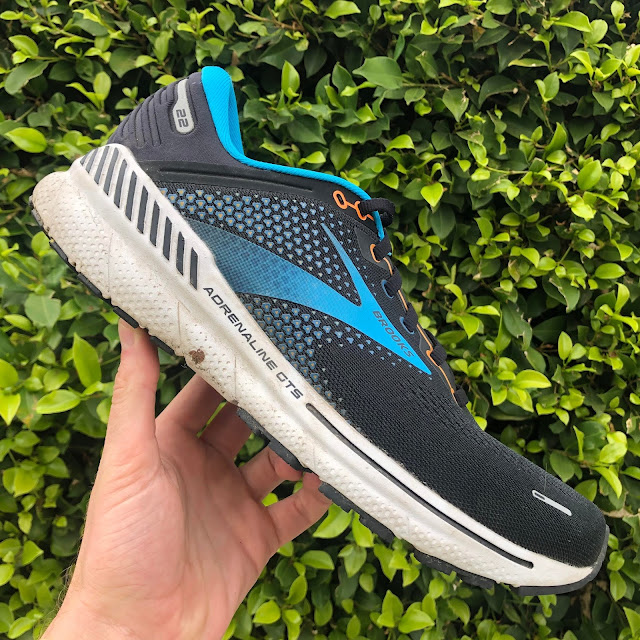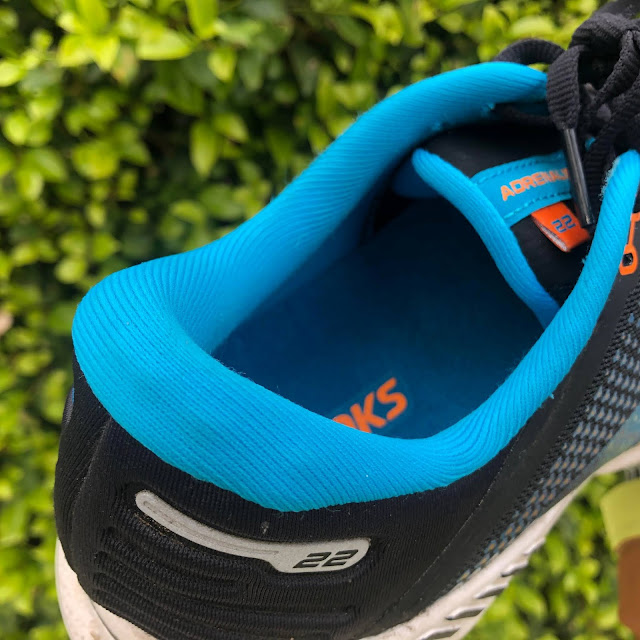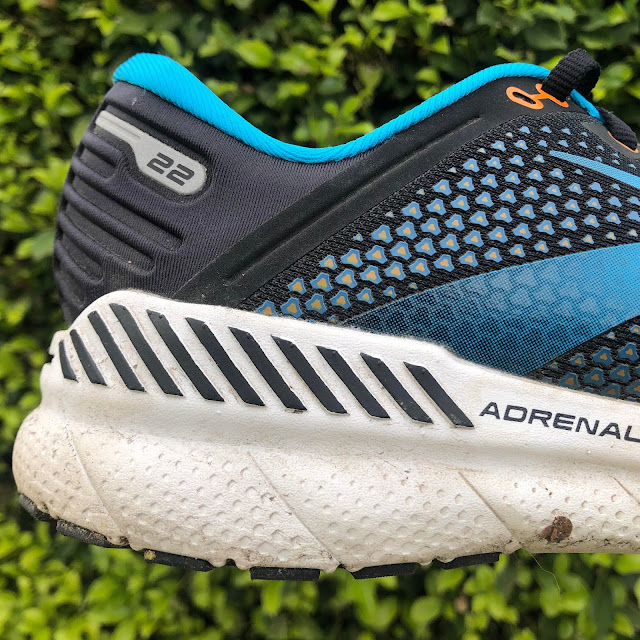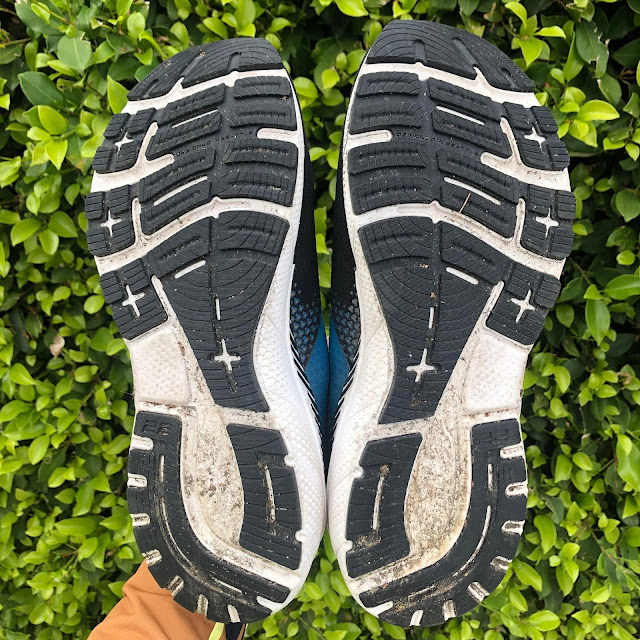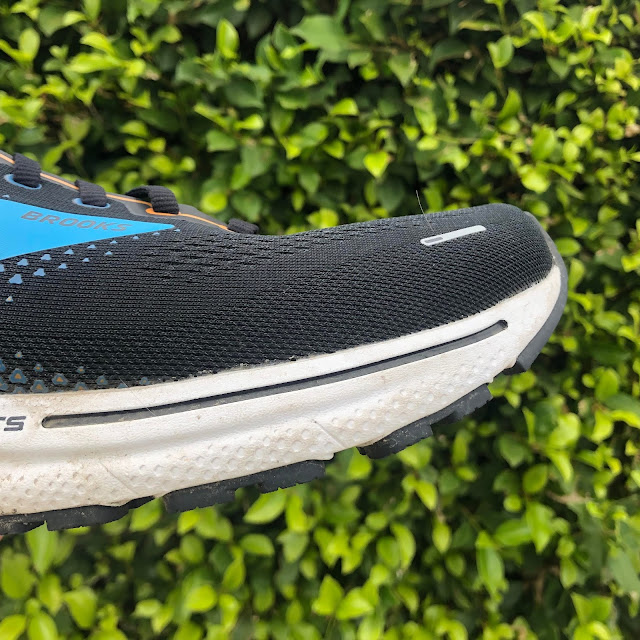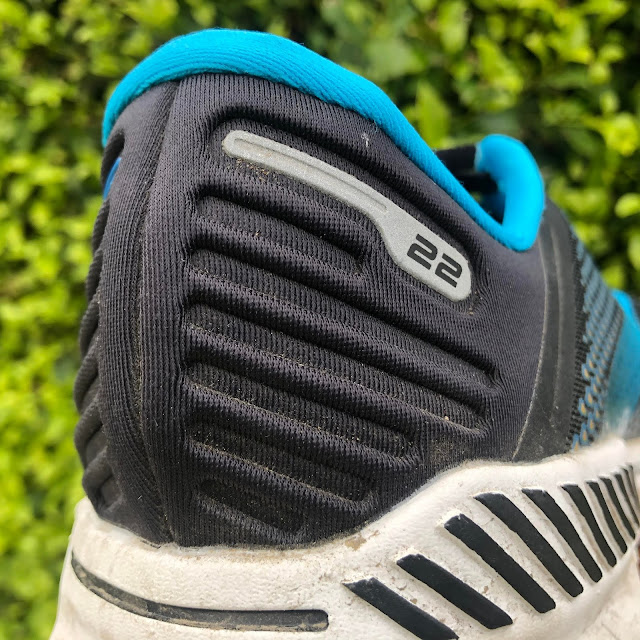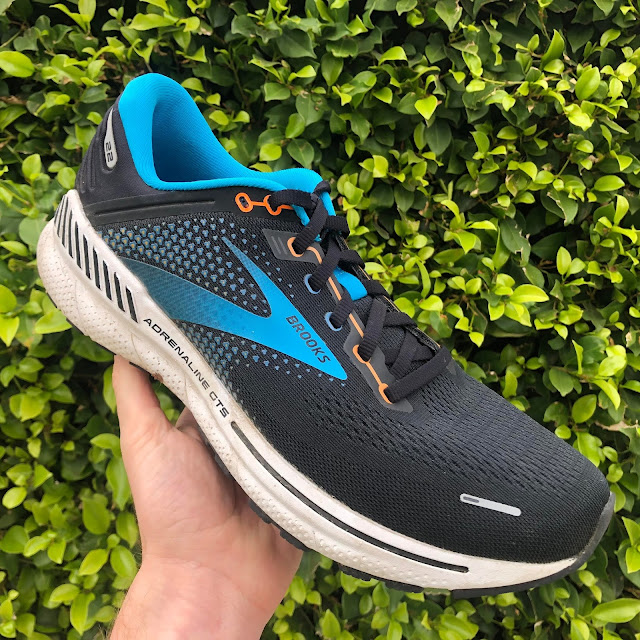Brooks Adrenaline GTS 22 Review: An Update That Refines the Ride
By Chief Editor Matt Klein
The Adrenaline GTS series has been a long running, top selling shoe in the Brooks line. GTS stands for "Go-To-Support", which for Brooks Running means the use of medial and lateral GuideRails across their stability line. The Adrenaline series was one of the first high level stability shoes to move away from traditional posting a few versions ago, which was a shocking change at the time. Now with a greater diversity of stability methods even among maximum stability trainers, it is not as unique, but still has a few characteristics that make it different. Now, the Brooks Adrenaline GTS 22 returns this Winter of 2021/2022 as a further refinement of this evolving yet classic stability shoe.
Brooks Adrenaline GTS 22
$139.95 at Running Warehouse
Weight: 10.2 oz / 289 g (men's size 9) TBD (women's size 8)
Stack Height: 36 mm / 24 mm
Drop: 12 mm
Classification: Moderate Stability Daily Training Shoe
RUNNING SHOE SUMMARY
The Brooks Adrenaline GTS 22 is a moderate level GuideRail-based stability shoe for those who want a higher drop, moderately cushioned shoe for daily miles and recovery runs. A new full length DNA Loft midsole softens the feel slightly but continues to provide a well cushioned but slightly responsive ride. The new upper is less complicated and lighter, providing a more secure rearfoot hold and a slightly more performance fit. Best for daily miles, long runs and a little uptempo work for those who need a dependable moderate stability trainer, the Brooks Adrenaline GTS 22 continues as a staple stability shoe with newer methods of stability.
FIT
The Brooks Adrenaline GTS 22 fits me true to size in my normal men's US Size 10. The fit is fairly normal throughout with a slight taper in the forefoot that opens up after a few miles. The upper is a simple engineered mesh in the midfoot and forefoot that breathes fairly well. It connects to a newly designed rearfoot with well padded heel counter. The heel counter retains the shape of the rearfoot well, but feels like it sits particularly far back from the heel with a large amount of padding. For this reason, I did not notice the heel counter at all other than a solid lockdown in the rearfoot that I did not have to lace lock. The tongue is normal in size, gusseted and sits comfortably against the foot. The laces interact well with the upper and easily snug down the midfoot without being too tight. The forefoot mesh is fairly flexible, but still keeps the foot on the platform. I felt the taper in the toebox only the first few miles, then it stretches gently. The fit overall is comfortable with hints of performance. The security is great without anything complicated and my feet feel locked down enough to pick up the pace if necessary. Overall the upper is simple, fits normal to slightly snug and locks the foot down well.
PERFORMANCE
The Brooks Adrenaline GTS 22 is on the lighter end for a moderate level stability shoe but still remains primarily a daily training shoe. Full length DNA foam replaces the DNA BioMoGo and Loft combination from the GTS 21. The DNA Loft foam is slightly soft and provides good cushioning throughout the length of the shoe. The heel has a solid transition, with the softer foam compressing more and working with the small but still effective heel bevel. The 12mm drop makes for a difference in feel between the rearfoot and forefoot. Landing at the rearfoot provides a slightly softer ride from heel to toe, while landing in the forefoot provides a slightly firmer and more responsive feel. The 12mm drop is certainly noticeable but less so than previous versions given that the midsole compresses a little more now. As with most Adrenalines, I have been able to do light workouts in these including fartleks and strides. The Loft Foam does feel moderately responsive as the pace picks up, but the higher heel and slightly softer foam make this shoe better for daily and recovery runs. The forefoot transition is easy and a little snappy thanks to the solid toe spring combined with a little flexibility. It transitions well at a variety of speeds and regardless of where you land. The durability is good as I have barely any wear on the outsole after 35 miles and the traction does well in wet (it just started raining here in SoCal). I have consistently gotten 300-500 miles out of Adrenalines and expect the same, if not more out of these. It is meant mostly for roads, but will be able to handle well-groomed trails if necessary (what happened to the Adrenaline ASR series?).
Overall the Brooks Adrenaline GTS 22 has a high drop with a slightly softer heel and slightly more responsive forefoot with a solid transition for daily miles, recovery runs and some uptempo miles.
STABILITY
The Brooks Adrenaline GTS 22 uses significant guiderails on both the medial and lateral side of the rear and midfoot for stability. These are more new age methods of stability, but are integrated well into the midsole. The stability is centered in the heel and midfoot and guides those who go either too far lateral or medial. The stability is not extreme and thanks to the slightly softer DNA Loft foam, the Adrenaline is more of a moderate stability shoe than a high level stability shoe. The sidewalls are combined with a slightly wider heel last, with gentle sole flare on both sides of the heel. The midfoot does narrow slightly, but fortunately the transition is quick enough that most people will not notice it. There are no extra methods of stability in the forefoot except for some mild sole flare. The majority of stability is centered in the heel with some in the midfoot, although the guiderails taper off there. Thus, those who need moderate stability in the rearfoot and some degree in the midfoot will do well in the Adrenaline GTS 22. This includes those who pronate or supinate as the GuideRails provide central guidance for both.
THOUGHTS AS A DPT / FOOTWEAR SCIENCE
The current age Brooks Adrenaline is an excellent example of providing guidance rather than pronation control. Not long ago, stability methods were focused only on preventing or reducing pronation. Pronation is the natural inward collapse of the medial arch. It is a triplanar motion, meaning it is a combination of eversion, abduction and dorsiflexion of the foot and ankle. During the stance phase of gait (when the foot is in contact with the ground), the foot and ankle should pronate as a way to help with shock absorption. To what degree this will occur will depend on many factors, including joint mobility, muscle strength and how well the person is shock absorbing at the joints above.
In some people, this can also occur the other direction, called supination. Supination is also a triplanar motion, consisting of plantar flexion, inversion and adduction. This motion is characterized by landing and then the ankle rolling outward (not to be confused with landing in a more inverted foot position and then pronating inward. That is still pronation). This is a little more problematic given that the lateral ankle ligaments are not nearly as large or tough as the medial ankle ligaments, which are stronger and better able to handle being stressed. While not as common, excessive motion in this direction (which like pronation has not been defined by a certain number of degrees).
Previously, most stability shoes were focused on methods for those who pronate. These usually pushed people to the outside, which can be problematic for someone who supinates. The goal of a stability shoe now should be to keep the foot more centered on the platform no matter which way it goes, rather than biasing a certain direction. This is the concept we discuss frequently, called guideance. This is what the Brooks GuideRail system does well that a medial post in the past could not. Those who go either direction will now find the Brooks Adrenaline series comfortable and a great match. Other shoes that do this well in the rearfoot include the Altra Paradigm 6, Hoka Arahi 5 (the J-frame does continue in the mid and forefoot) and the Adidas Solarglide 4 ST. There is nothing wrong with shoes that have medial posts/wedges/methods, they just won't work for someone who has stability needs laterally. This was a huge change for the Brooks Adrenaline GTS several years ago and I applaud Brooks for continuing with this despite it being so different from traditional methods.
RECOMMENDATIONS
Based on my experience with the last several Adrenalines, I think the GTS 22 is the best one in the GuideRail line. Brooks seems to have finally gotten a good balance between the GuideRails and the sole transition. Although the ride is smoother now, I would still like to see a little larger heel bevel to smooth out heel transitions. I do not think the heel drop should be changed as the higher drop will still work for some people and there are plenty of moderate level heel drop stability options out there. I would encourage Brooks to fill in the medial midfoot or consider increasing the length of the medial GuideRail to provide a bit more stability through the midfoot. This is more of a moderate stability shoe though, so that may not be necessary unless the person really needs stability more forward on the medial side.
Given that the Glycerin GTS is the highly cushioned stability shoe in the Brooks line up, I would also like to see the Adrenaline lose a little bit of weight. Version 22 gained a bit and I would like to see it drop below 10 oz to better compete with shoes like the the GT-2000 and Arahi 5, which are in a similar category but are lighter.
WHO THE SHOE IS FOR
The Brooks Adrenaline GTS 22 is for those looking for a moderate stability shoe with medial and lateral stability from GuideRails for daily training, easy miles and some mild uptempo work. Featuring a more traditional 12 mm drop, those who like more drop or have tight calves may enjoy this shoe more. The full length DNA Loft foam improves the rearfoot transition, and provides a lightly soft ride through the length of the shoe. The forefoot continues to be more responsive, while a new and more streamlined upper provides room in the heel and midfoot and a slightly snugger fit up front. A classic stability shoe that continues to utilize new age methods in the rearfoot.
GRADING
Matt
Fit: B+ (A secure heel with a little room in the midfoot and a more snug forefoot. Slightly more performance fit)
Performance: A- (Solid heel transition with a snappy forefoot. Can handle easy miles and some uptempo work)
Stability: A- (Stable heel regardless of what direction you go. Could use a bit more in the forefoot but this is a stability shoe for those who need it in the rearfoot/midfoot. GuideRails well integrated and smooth)
DPT/Footwear Science: A-(Excellent use of GuideRails on the medial and lateral side. Integrated well into the sole. I would like to see more effort into the forefoot if possible)
Personal: B+ (A consistent shoe for me that isn't exciting, but is one I continually reach for)
Overall: B+/A- (A moderate stability shoe with new age stability, a traditional drop and a sole that can handle mileage and some mild uptempo work. Consistent)
FURTHER THOUGHTS (VIDEO)
Learn more about the Adrenaline with Matt's video review here.
SHOP | SUPPORT DOR
*Brooks Adrenaline GTS 22
$139.95 at Running Warehouse
Shop Men | Shop Women
*Using the link to purchase helps support Doctors of Running. Thanks so much!
Check out Gear We Love
Feetures Socks: Massively grippy socks that will make you feel more one with the shoe
Huma Chia Gel: Natural and goes down easy. Powered Contributor Nathan Brown to his marathon
Trigger Point Foam Roller: Help get those knots out post-run and feel better for tomorrow
Theragun Massager: This small version is great on the go for working tired legs
Ciele Hat: Our team's favorite running hat of choice!
FURTHER READING
Learn more and find comparisons in our Guide to Stability Shoe here.
Recently at Doctors of Running
Nike ZoomX Vaporfly Next% 2 Review - The marathon super shoe gets a new upper update that refines the shoe further
Coros Apex Pro Review - Never-ending battery, endless data for multiple sports and elevations
Brooks Ghost 14 Review - We look at the long-running reliable trainer from Brooks
Best Plated Trainers of 2021
November Round-Up | Latest Reviews, Science Friday Blowout, Hoka 2022
Find all Shoe Reviews at Doctors of Running here.
Thanks for reading!
Strava: Doctors of Running
Podcast: Virtual Roundtable
Pinterest: Doctors of Running
TESTER PROFILES:
Doctor of Physical Therapy
Editor's Note: As always, the views presented on this website belong to myself or the selected few who contribute to these posts. This website should not and does not serve as a replacement for seeking medical care. If you are currently injured or concerned about an injury, please see your local running physical therapist. If you are in the Los Angeles area, I am currently taking clients for running evaluations.
Contact us at doctorsofrunning@gmail.com
NEXT: Coros Apex Pro Review
